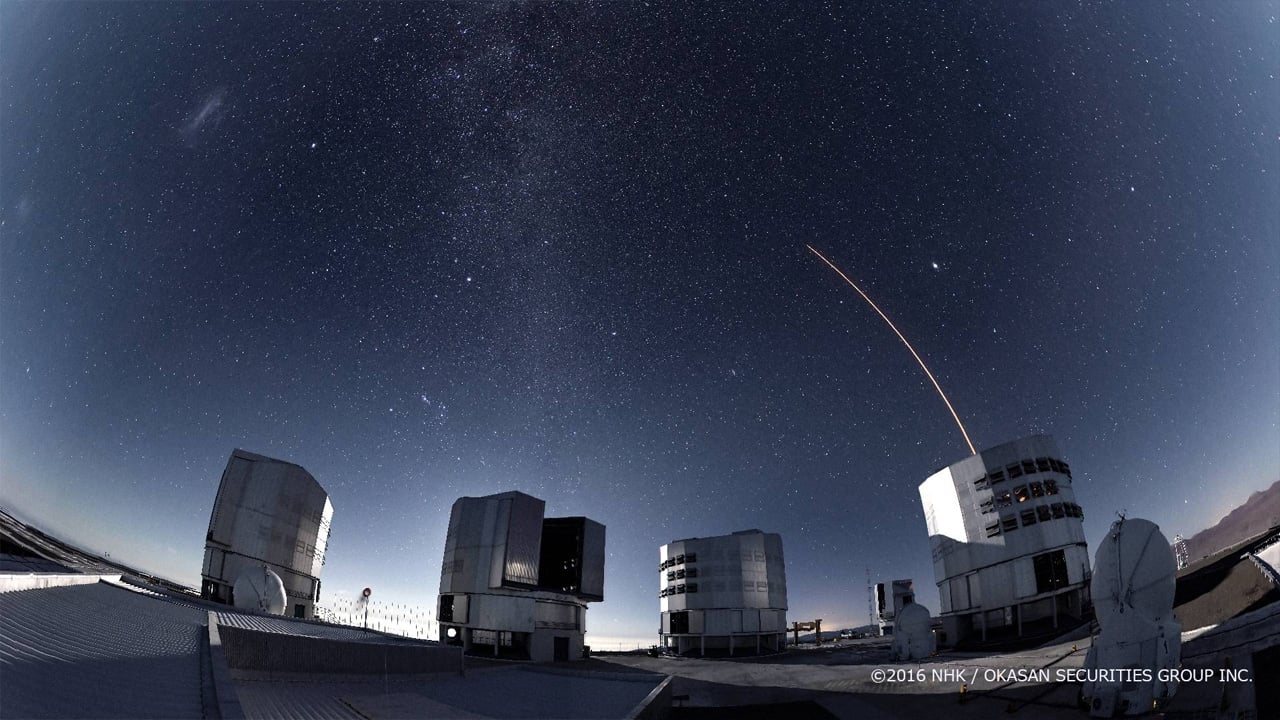Cosmic Front (2011)
Cosmic Front
2011
Explore Magellanic Clouds, Black Holes, Asteroids and other phenomena of the universe in the Cosmic Front series.
Seasons & Episode

Extraterrestrial life = Science Fiction. Not so fast! -- the Cassini probe has provided photos of Enceladus, where scientists have found geysers of water vapor. And then there is Gliese 581g, a planet with Earth-like conditions....what would life forms look like in these watery environments?

Material called "dark matter" could hold the key to understanding the creation of the universe. Although its composition is completely unknown, dark matter is believed to have more than five times the mass of existing elements like hydrogen and oxygen. Using highly specialized observation devices, scientists around the world are vying to be the first to uncover the secret of dark matter. How do these scientists form their hypotheses and attempt to validate them? Will they ever find out what dark matter is? This program focuses on this fascinating competition among some of the world's top scientists.

Telescopes on six solar observation satellites are currently monitoring the sun. The satellites include Japan's Hinode and the SDO developed by the United States. Solar activity (flares, sunspots) is at its lowest since modern observation began - what implications does this have for our Earth?

With their relentlessly powerful gravitational pull, black holes suck in anything that comes near them: not even light can escape. They were first discovered not by direct observation but through the human power of logical analysis. However, the very existence of black holes was the subject of heated debate for about half a century. This episode introduces the latest research into the strange physical phenomena caused by black holes and an experimental method for directly viewing these invisible celestial bodies. It is the story of dedicated scientists in a quest to see the "unseeable".

The Large and Small Magellanic Clouds, luminous in the night sky of the Southern Hemisphere, are celestial bodies shrouded in mystery, but recent observations have revealed some startling facts about them. They are survivors of galaxies formed in the early stages of the Universe.

Monster black holes contain several million to ten billion times the mass of our Sun. They've been discovered in the center of many galaxies, each with their own hundreds of billions of stars. Observations have shown that the mass of monster black holes stands in proportion to the mass of their galaxies. Scientists have begun to believe that these giant black holes are the key for understanding how galaxies emerged and developed throughout the history of our 13.7 billion-year-old universe. The latest astronomical observations illustrated by magnificent computer graphics close in on the essence of these monster black holes.

Countless stars illuminate the night sky. In our galaxy alone, there are over 100 billion stars. It's believed that immediately after the universe was created, there wasn't even a single star. There was only darkness. The "First Stars" that sparkled in space ended this Dark Age. Recent research has revealed that these stars dramatically changed the nature of the universe. The universe, as we know it now, with galaxies, planets and life, was created by these great stars. Get ready for new revelations about the first stars.

About a decade ago, a mysterious bronze disk with astronomical markings was discovered in Germany. It's 30 centimeters in diameter and 5 centimeter thick and is inlaid with gold decorations of the sun, the moon and stars. Named the Nebra Sky Disc after the place where it was found, this disk is surprisingly old. Studies suggest it was made some 3,600 years ago. Furthermore, the latest scientific analyses of the designs embossed into it revealed the amazing astronomical knowledge of ancient people. The hidden mysteries of the world's oldest known astronomical device are now coming to light.

Could Mars have ever harbored life? Thanks to NASA's latest Mars rover Curiosity, scientists are finding clues to this profound question since the rover made an extraordinary landing on the red planet in August 2012. For the first time in Mars exploration, Curiosity drilled into Martian rocks and investigated the subsurface chemistry in detail. It turned out that underneath the highly oxidized red surface was "grey Mars" material determined to have life-supporting potential. This program tracks the first year of Curiosity's adventure, and confirms an ancient environment to support life on Mars.

The Orion Nebula is a beautiful sight in the night sky. One of the visionaries behind the Hubble Space Telescope, Dr. Robert O'Dell, has been studying Orion for more than 50 years. When he and his team focused Hubble on Orion, they discovered that the nebula is a giant stellar nursery giving birth to new stars and planets. Their groundbreaking research also revealed the three-dimensional shape of the nebula and the actual location where stars are formed. Based on this research, a dynamic CGI reconstruction of the Orion Nebula takes us on an exciting adventure deep inside this stellar nursery to witness stars and planets dramatically bursting into existence.

The terraforming of Mars is the process by which man would transform the barren land of Mars into a new, Earth-like planet capable of sustaining life. According to Dr. McKay of the NASA Ames Research Center, this could become reality as early as 100 years from now. Artificial microorganisms created with the latest techniques in synthetic biology would be used to produce resources such as iron, energy, and food directly on the planet itself. This episode of COSMIC FRONT reveals the details of this megaproject by using images created based on the most up-to-date potential scenarios.
Explore Magellanic Clouds, Black Holes, Asteroids and other phenomena of the universe in the Cosmic Front series.
Watch Trailer
Free Trial Channels























